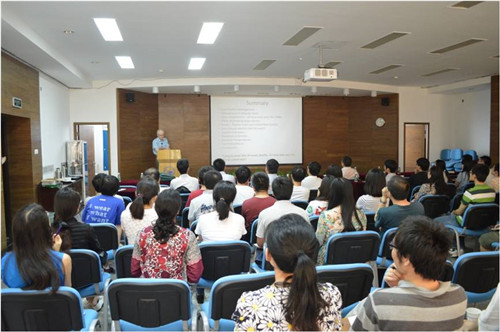Prof. Philip Douglas Jones, the Research Director of Climatic Research Unit (CRU), University of East Anglia, UK, visited the Institute of Atmospheric Physics (IAP) and China University of Science and Technology (CUST) during 24 May - 6 June 2015. The two-week lecture tour was supported by "CAS President's International Fellowship Initiative (PIFI) for Distinguished Scientists”. The PIFI program is to support highly-qualified international scientists and postgraduate students to work and study at CAS institutions and strengthen their scientific collaboration with CAS researchers. The PIFI program is available for four categories of international researchers and students: distinguished scientists, visiting scientists, postdoctoral researchers and international PhD students. Recommended by IAP, Prof. Jones was selected to be the awardee of Category A: PIFI for Distinguished Scientists.

During his visit in China, Prof. Jones gave a series of well-attended lectures, including “History of Global Temperature Estimation – K?ppen to Satellites: What’s important and what isn’t?” and “Monitoring near-surface temperatures: Comparisons with Reanalyses, National Averages and European Extremes”. Prof. Jones also took part in research team seminars and discussed the latest progresses in the field of climate change studies with Chinese colleagues from IAP, CUST, Institute of Geographic Sciences and Natural Resources Research and China Meteorological Administration. His interim office in IAP was also frequented by scientists and students who were keen to discuss the burning issues in climate change research.

Prof. Jones was awarded a professorship under the framework CAS PIFI for Distinguished Scientists in 2015. Prof. ZHU Jiang, Director General of IAP, presented him the CAS certificate.

Prof. Jones is well-known for developing global datasets of surface temperatures, precipitation and pressure, etc., which are kept and updated monthly at CRU and widely applied in a variety of research activities worldwide. He is recognized as one of the top 0.5% of highly-cited researchers in the geo-sciences by the ISI (the institute in the US that maintains the Web of Science).